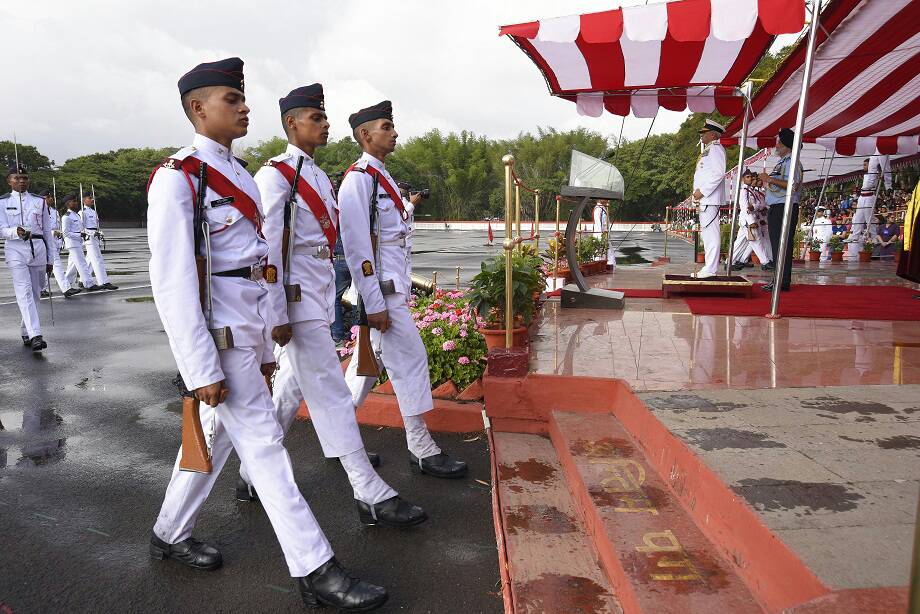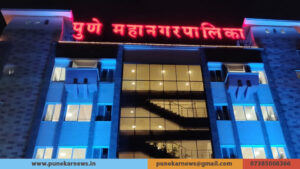NDA Passing Out Parade POP to be held on May 30 without cadets’ parents

Pune, May 28, 2020: Passing Out Parade (POP), the much-awaited event of the Pune-based National Defence Academy (NDA), Khadakwasla, will be held on 30 May in a scaled-down manner. In view of nationwide lockdown due to Coronavirus pandemic, parents of cadets will not be able to attend the parade.
According to NDA officials, Covid-19 has affected and disrupted their lives. Training institutions are also not intact from these and all across have been forced to modify their traditional training curriculum which included only contact classes. As a training institution NDA has quickly adapted to new normal and is able to complete the spring term. But there is still a lot of end of term activities which form part of passing out of a cadet from the academy after three years of rigorous training. As the new normal (social distancing) takes precedence over all activities the End of Term events are suitably modified as per the government and higher headquarter guidelines.
The Passing Out Parade (POP) is the most spectacular among the end-of-term events at the NDA. It is also the culminating event of another successful term. The unique parade held at the Khetarpal Parade Ground comprises over one thousand participating cadets bidding farewell to their senior colleagues. A masterly display of drill movements, synchronised with the accompanying band ingrains long-lasting memories in participants as well as viewers. The haunting strains of ‘Auld Lang Syne’ and the Adjutant on his charger accompany the passing out cadets to The Final Steps.
In the closing moments, the mast at the Quarter Deck is manned by the cadets of the junior-most course to cheer on the passing out course as they go past the Quarter Deck in a slow march. At the final step, engulfed by a flood of nostalgia spanning three eventful years, each cadet can feel justifiably proud of his achievement. Three years ago, he had entered the portals of this hallowed institution with a little trepidation perhaps; he leaves now a young man strong in body and mind, confident and assured and proud of values imbibed here. He is well on his way to achieving the ideals of an officer and a gentleman.
History of NDA: The National Defence Academy is an iconic institution, a global brand of excellence in the sphere of military education. Over the years it has emerged as a unique military academy, attracting the best of youth from our nation and also from friendly foreign countries and transforming them into officers and gentlemen. During the last seven decades of its glorious existence, the National Defence Academy has grown both in grace and grandeur and from its portals have emerged ‘leaders of men’, who have demonstrated the essence of inter-services camaraderie and jointsmanship, thereby vindicating the faith and vision of its founding fathers.
Apart from leaders of men, the alumni have proved to be great mountaineers, cosmonauts, sportsmen, researchers, creative writers, artists, corporate honchos and more recently, Olympic champions. Their achievements are all-pervading and showcased in every echelon of our Armed Forces and also in the civil society. The ‘cradle’ has indeed rocked the nascent youth and groomed them properly as ‘leaders’ who have lived up to its ethos: ‘Seva Paramo Dharma’ (Service Before Self).
The concept of the NDA was conceived at the conclusion of the Second World war when six years of fierce combat had emphatically underlined the need for ‘Jointness’ in modern warfare, as it was correctly believed that it is primarily the element of synergy which provides the significant asymmetric edge in a conflict situation. The NDA was, at the time of its inception, a unique and pioneering concept that was far ahead of its time. In fact, so exciting and novel was the concept that many nations looked at it with avid interest to see how it would shape out in practice.
Prior to the plan for an Academy being mooted, in 1941, the Government of Sudan had given a generous gift of a hundred thousand pounds to Lord Linlithgow, the Viceroy of India, to build a war memorial to commemorate the sacrifices of the Indian troops in the Second World War for the liberation of Sudan. It was this core corpus that was later utilised to build the grand edifice of the National Defence Academy. On 02 May 1945, a Committee was formed under the Chairmanship of the Commander-in-Chief, India, Field Marshal Sir Claude J Auchinleck, GCB, GCIE, DSO, OBE, popularly known as ‘Auk’, to examine the feasibility of forming an institution with excellent facilities for training the officers of the Armed Forces jointly. Many foreign training academies were visited to analyse the efficacy of their working and evolve a suitable concept for an Indian War Academy.
The report was finally referred to the Chiefs of Staff Committee in 1947. Their suggestion for the formation of an Interim Joint Inter-Services Wing at the Indian Military Academy, Dehradun, was accepted for implementation. Concurrently an action plan to commission a permanent war academy at Khadakwasla (Pune) was commenced and Prime Minister Pandit Jawaharlal Nehru himself laid the foundation stone on 06 Oct 1949.
On 1 January 1949, the Armed Forces Academy having its military Academy and the Indian Military Academy and the Joint Services Wing were commissioned. After two years of training at the JSW, Army cadets went on to the Military wing for a further two-year pre-commission training. The Naval and the Air force cadets were sent to Dartmouth and Cranwell in the UK for advanced training. On 07 December 1954, the interim process crystallized with the commissioning of the National Defence Academy. The formal inauguration of the Academy took place on 16 January 1955.
Why Khadakwasla?
The National Defence Academy is located south-west Pune city and north-west of Khadakwasla Lake on 7015 acres of land, Out of the 8022 acres donated by the Government of the erstwhile Bombay state. The other suggested sites were Bombay (particularly Marve), Bengaluru, Dehradun, Belgaum, Deolali, Nasik, Puri, Secunderabad and Vizag.
Pune was ultimately chosen after careful deliberation for its salubrious climatic conditions, the suitability of terrain for military training, proximity to the Arabian sea, the existence of an operational existence of a combined training centre and the ‘mock’ landing ship, HMS Angostura, on the north bank of the Khadakwasla Lake lent additional leverage to the claims of Khadakwasla over other contenders for being chosen as the site for the prestigious NDA, with the daunting Sinhagad Fort as a panoramic backdrop.
The Khadakwasla complex is dominated by the looming blue skyline of the Sinhgad Fort Complex It looms over the Academy like a colossus, an overpowering iconic presence. It is a peak with a personality. Situated atop this blue massif is the famous Sinhgad fort which Tanaji Mlusare, the favourite General of Chhatrapati Shivaji Maharaj, had captured from the Mughals in a daring and incredible assault up a cliff face.
Operation ‘Badli’ was the code name given to the great migration from Dehradun to Khadakwasla, Pune. The word Dehradun comes from the etymological root of “Dera-Drona” or the ‘Camp of Drona’. The shifting of the epicenter of this Academy from the historic Camp of Drona to Khadakwasla was not without its symbolism in military historical terms. Ironically, the NDA had originated from the ancient Camp of Drona (of the Mahabharata fame) and migrated to Shivaji’s seat of the Indian Military Revival that had occurred near Pune.





